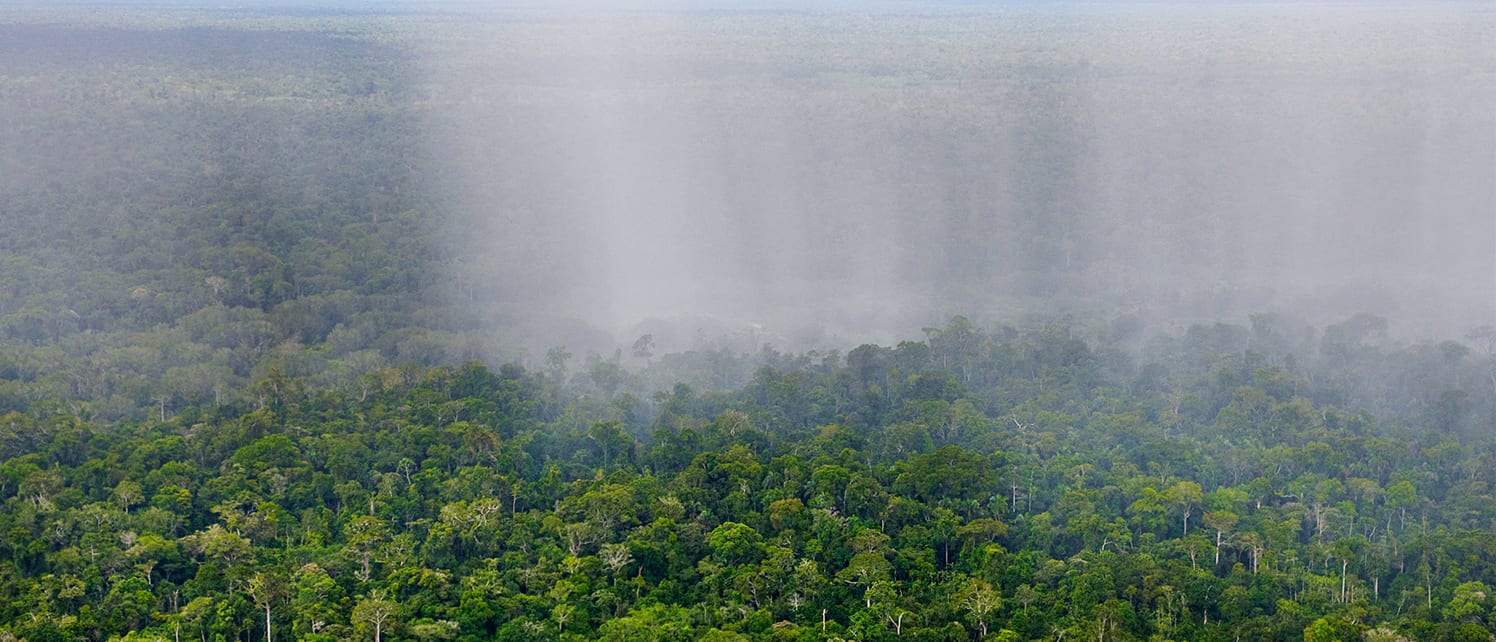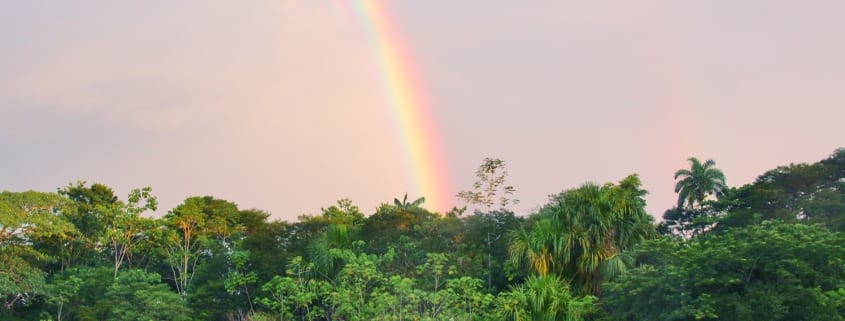Climate Change Series Part 3 – Tropical Forests Impact Climate in More Ways than Just CO2
So far, our climate change series has investigated how tropical forests are significant carbon sinks and how deforestation and forest degradation are major sources of carbon dioxide emissions. But did you know that rainforests affect atmospheric gases and our climate in less well known, but equally important, ways?
“Tropical forests play an integral role in local and regional climates,” said Rainforest Trust CEO Dr. Paul Salaman, “and carbon storage is only half the story.”
The other half of the story has to do with rainforests creating cloud coverage and precipitation, both of which have a significant impact on local, regional and even global climate.
We have discussed photosynthesis, and its importance for carbon dioxide absorption. However, another equally important action plants conduct within this process is transpiration. When plants absorb water up from their roots, they convert the excess into water vapor and release it through small pores in their leaves. According to the United States Geological Survey, one large tree can release as much as 40,000 gallons of water back into the atmosphere every year. This has a direct effect on cloud coverage and precipitation patterns, and provides about 10 percent of the atmosphere’s moisture.

Tropical plants also release the volatile organic compound isoprene as a byproduct of photosynthesis. Isoprene mixes with other gases in our atmosphere and creates secondary organic aerosols, which form ozone. Ozone is an essential part of our upper atmosphere, blocking the sun’s ultraviolet light and reducing our risk of skin cancer. However, when ozone is created in our lower atmosphere, it contributes to the development of clouds.
Cloud coverage acts as a regulator of local and regional temperatures in two ways. It provides precipitation as the clouds travel across the land and it provides higher albedo, or reflectivity of the sun’s rays. Clouds, much like ice and snow, reflect sunlight back into space better than the dark canopies of rainforest. This has a direct cooling effect locally and when considering tropical forests en masse, the planet as a whole. In fact, according to John Cook from the Center for Climate Change Communication at George Washington University, just a 1 percent reduction in albedo (including from cloud coverage, ice and snow) could increase global temperatures on a level equal to the doubling of carbon dioxide in the atmosphere.
Although these contributions come from all tropical forests, as the largest rainforest in the world, the Amazon releases the most oxygen, water vapor and isoprene, making it perhaps the most significant, natural contributor to the regulation of global atmospheric gases and climate. Amazon rainforest transpiration is so important that in the late dry season it is integral for bringing on each new wet season.
“These forests are self-propagating, in a sense; by holding moisture and maintaining temperature, they help create the very rains that sustain them in the wet season, Dr. Salaman said.”
Rainforest Trust has been working to protect tropical forests in Central and South America since our start in 1988. Thus far, we have protected nearly 10 million acres throughout the region, with plans to expand our efforts over the next few years, as part of our incredible directive to protect 50 million acres globally by 2020 through the SAVES Challenge. Some of our largest, current projects in the region include the expansion of the Airo Pai Community Reserve along with other conservation efforts in the Peruvian Amazon and the expansion of the Canande Reserve in Ecuador.
Support Rainforest Trust’s Work to Preserve Climate-Regulating Habitat around the World.




